Artists who are committed to causes are smooth operators. What they show is beautiful even when it is cruel. No matter how deeply they probe social realities that shock the conscience, the forms in which they do so please the eye.
Engagierte Künstler sind Schlitzohren. Was sie zeigen ist schön, auch wenn es grausam ist. Gleich wie tief sie hineinschauen in gesellschaftliche Realitäten, die einem die Schuhe ausziehen – ihre Formen finden unser Wohlgefallen.
That’s not just cynicism on the part of the contemporary art world. Lending an aesthetic gloss to injustice and brazen iniquity is a prerequisite of artistic enlightenment, which needs beauty to speak of grievous ills. It’s no accident that the comedic and the grotesque are indispensable to critical forms of art (see Charlie Chaplin). It’s the foundation of their credibility that they present scandalous situations and political depravities in words and gestures that take grave matters lightly. Such artistic contortion, and occasionally mystification, does not claim that it can explain let alone improve the world, and yet sometimes it hits the nail on the head. Meanwhile, it isn’t easily captured by rational discourses and symbolic usurpation – a point to which we will return.
“A Study in Apocalyptics” is Alice Creischer’s term for the exploration of today’s predatory capitalism, which she and Andreas Siekmann conducted in 2012 and 2013. Their joint project In the Stomach of the Predators evolved in three stages – the Bergen Assembly, the Biennale Regard Benin, and the Istanbul Biennial – and each artist now enlarges on his or her findings in a solo exhibition, one at KOW and one at Galerie Barbara Weiss. Creischer and Siekmann frequently work together as artists, curators, and theorists (and in this instance, their children also play an active part), but the two shows clearly illustrate the differences between their positions, which combine closely interwoven contents with distinctive methodological approaches. So In the Stomach of the Predators is also an example of artistic collaboration: A double praxis in which we can recognize two individual voices.
Das ist nicht bloß ein Zynismus des heutigen Kunstbetriebs. Die Ästhetisierung des Ungerechten und Schamlosen ist eine Voraussetzung künstlerischer Aufklärung, die das Schöne braucht um das Schlimme zu sagen. Nicht zufällig zählen Komödie und Groteske zum festen Bestand kritischer Kunstformen (siehe Charlie Chaplin). Deren Glaubwürdigkeit besteht gerade darin, schockierende Verhältnisse und politische Abgründe in Worten und Gesten zum Besten zu geben, die den Ernst der Sache nicht ernst nehmen. Solch artistische Verzerrung und mitunter Verrätselung behauptet nicht, die Welt zu erklären oder gar zu verbessern, und trifft doch den Nagel manchmal auf den Kopf. Zugleich lässt sie sich von rationalen Diskursen und symbolischer Vereinnahmung nicht ohne Weiteres fangen. Wir kommen noch darauf zurück.
„Eine Apokalyptische Recherche“ nennt Alice Creischer ihre Untersuchungen zum Raubtierkapitalismus unserer Tage, die sie 2012 und 2013 mit Andreas Siekmann im Rahmen des Bergen Assembly, der Biennale Regard Benin und der Istanbul Biennale durchführte. Das gemeinsame Projekt IN THE STOMACH OF THE PREDATORSentwickelte sich über diese drei Etappen, für KOW und die Galerie Barbara Weiss haben es beide Künstler nun individuell weitergeführt und in zwei Einzelausstellungen pointiert. So oft Creischer und Siekmann immer wieder als Künstler, Kuratoren und Theoretiker zusammenarbeiten (ihre beiden Kinder spielen diesmal ebenfalls eine aktive Rolle), so deutlich zeigen sich nun auch die Unterschiede beider Positionen, die, obgleich inhaltlich vielfach verschränkt, methodisch andere Wege gehen. IN THE STOMACH OF THE PREDATORS ist damit auch ein Beispiel für eine künstlerische Kooperation im Sinne einer doppelten Praxis, in der beide Stimmen erkennbar sind.
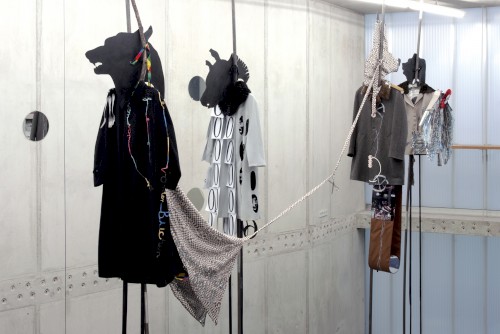
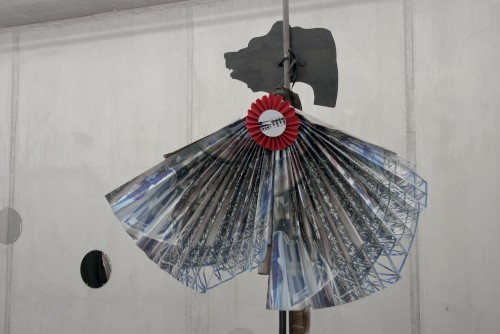
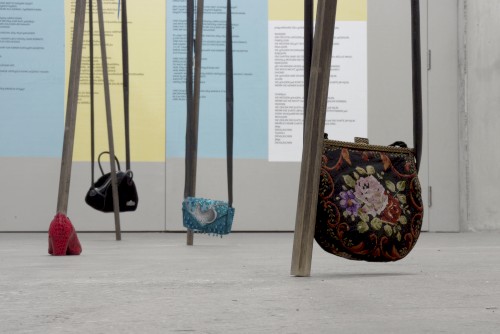
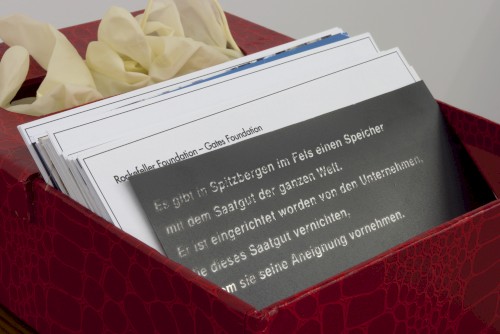
Four whimsical sculptures set on tall stilts in the upstairs gallery represent predators: the wolf, the hyena, the bear, and the jackal.
Vier Raubtiere stehen als schrullige Skulpturen auf meterhohen Stelzen im oberen Raum der Galerie: Wolf, Hyäne, Bär und Schakal.
Creischer’s production picks up where her first exhibition at KOW (The Establishment of Matters of Fact, 2012) left off, returning to its structure as well as themes. Four whimsical sculptures set on tall stilts in the upstairs gallery represent predators: the wolf, the hyena, the bear, and the jackal. Each is emblematic of a different form of the privatization and monopolization of the commons and the figurehead for one of the show’s four chapters. We need to look closely to find meaning in the texts, signage, and pictorial appliqués on the animals’ clothes. There’s a precise symbolic logic behind them, but their significance is initially fairly impenetrable. Later on, in the basement gallery, we encounter index cards with statistical data and in-depth information about corporate networks and political backgrounds. They document the eviction of people from what used to be their commons to make room for the economic exploitation of their living environments by outside agents. This is toxic material, and when you touch it, you’d better wear protective gloves.
The wolf: The island of Spitsbergen is home to the secure seed bank known as Svalbard Global Seed Vault. Stored in a cavern deep in the permafrost soil is the global biodiversity of tens of thousands of agricultural crops that are being ousted as the laboratories of biotech giants like Monsanto, Pioneer, and Syngenta churn out modern high-efficiency varieties. The same corporations fund the seed bank to dispel the fear that they might be destroying the varietal diversity created by hundreds of generations of plant growth. A global gene pool, a heritage and common treasure of the world’s cultures, is effectively disappearing in the bowels of a bunker whose gates are guarded by predatory agribusinesses.
Creischers Produktion nimmt die Struktur und Thematik ihrer ersten Ausstellung bei KOW wieder auf und schließt unmittelbar daran an (DAS ETABLISSEMENT DER TATSACHEN, 2012). Vier Raubtiere stehen als schrullige Skulpturen auf meterhohen Stelzen im oberen Raum der Galerie: Wolf, Hyäne, Bär und Schakal. Sie stehen für vier unterschiedliche Fälle der Privatisierung und Monopolisierung von Gemeingütern (Commons) und teilen die Ausstellung in entsprechende Kapitel. Man muss genau hinsehen, um den Texten, Zeichen und Bildapplikationen auf den Kleidern der Tiere Bedeutung zu geben. Zwar ist deren symbolische Logik präzis, inhaltlich steht man aber weitgehend auf dem Schlauch. Erst später, im Untergeschoss, bieten Karteikarten genaueren Einblick in Statistiken, Firmennetzwerke, politische Hintergründe. Sie informieren über die Vertreibung von Menschen aus ihrem vormals geteilten Besitz, um Platz zu machen für die ökonomische Fremdverwertung ihres Lebensraums. Toxisches Material, das man besser mit Schutzhandschuhen anfasst.
Der Wolf: Auf der arktischen Insel Spitzbergen liegt der Saatgut-Tresor Svalbard Global Seed Vault. Tief im Permafrostboden wird hier der weltweite Artenreichtum zehntausender Nutzpflanzen verwahrt, die durch moderne Hochleistungssorten aus den Laboren von Biotechkonzernen wie Monsanto, Pioneer und Syngenta verdrängt werden. Eben diese Konzerne finanzieren den Samen-Tresor, um Befürchtungen zu zerstreuen, sie würden die in hunderten Generationen herangezüchtete Sortenvielfalt zerstören. Tatsächlich verschwindet ein globaler Genpool, ein Erbe und Gemeingut der Kulturen der Welt, im Magen eines Bunkers, dessen Tore kontrolliert werden von den Raubtieren der Agrarindustrie.
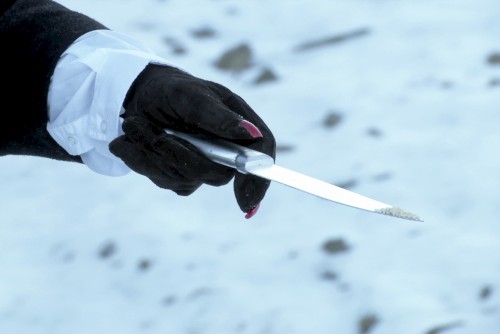
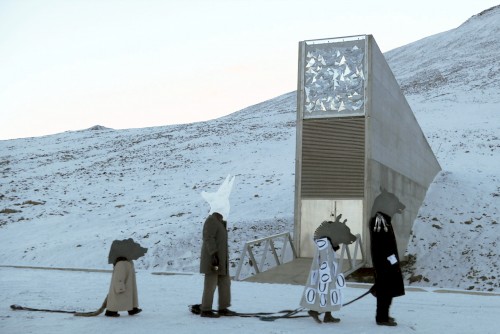
The hyena: In Benin as in other underdeveloped countries, properties are being demarcated where no such boundaries existed. Common ownership and individual rights of use were woven into local knowledge; bureaucracies now require paperwork. National authorities and investment companies survey land, determine ownership, and sell options to acres on Wall Street before the users or owners have even been expelled or compensated below fair value. The colonial partition of Africa continues, in that land is privatized for farming and building, plot by plot.
The bear: Something similar is going on in Istanbul; only the land-grabbers’ tools are different. The construction boom in the city goes hand in hand with the displacement of its people. Traditional neighborhoods such as Sulukule, the world’s oldest Romani settlement, and Tarlabaşı, the socially mixed district downhill from Gezi Park and Taksim Square, are being cleared; their residents dislodged. Members of Erdoğan’s family in government and the real estate industry work together to raze organic urban structures, liquidate public life, and develop the newly vacant urban space in public-private partnerships that yield high profit margins.
The jackal: Many predators look for new prey in resource capitalism. The exploitation of land promises greater profits than the exploitation of productive labor. Such “extractivism” literally undermines the commons, erodes living environments, and at the same time undercuts the demands for justice of the workers who populate the slums of the metropolises, a new industrial reserve army hoping for future deployments. The occupation of the commons, the expulsion of indigenous groups, and the large-scale contamination of the environment, for example by enormous surface mining ventures, were also the subjects of the final chapter in Creischer’s earlier exhibition.
Die Hyäne: In Benin wie in anderen wenig entwickelten Ländern werden Eigentumsgrenzen gezogen, wo es vorher keine gab. Gemeinschaftsbesitz oder einzelne Nutzungsrechte waren im lokalen Wissen der Bevölkerung verankert, nun verlangen Bürokratien Papiere. Staaten und Investmentgesellschaften vermessen Land, bestimmen Besitzverhältnisse und bringen schon Quadratmeter als Optionen an die Wall Street, noch bevor die Nutzer oder Eigentümer vertrieben oder unter Wert entschädigt werden. Die koloniale Aufteilung Afrikas setzt sich fort, indem Parzelle für Parzelle auf den Märkten für Bau- und Agrarland privatisiert wird.
Der Bär: Ähnliches geschieht in Istanbul, nur sind die Instrumente der Landnahme andere. Der Bauboom in der Stadt ist ein Vertreibungsprozess. Traditionelle Stadtteile wie Sulukule, das älteste Roma-Viertel der Welt, und Tarlabaşı, der sozial durchmischte Bezirk unterhalb des Geziparks und des Taksimplatzes, werden samt ihrer Bewohner entfernt. Mitglieder der Erdoğan-Familie arbeiten auf Seiten der Regierung und der Immobilienwirtschaft Hand in Hand, um gewachsene urbane Strukturen zu schleifen, öffentliches Leben aufzulösen und den freigesetzten Stadtraum in Public-Privat-Partnerships mit hohen Gewinnmargen neu zu bewirtschaften.
Der Schakal: Viele Raubtiere suchen neue Nahrung im Ressourcenkapitalismus. Die Ausbeutung des Bodens verspricht höhere Gewinne als die Ausbeutung produktiver Arbeit. Dieser „Extraktivismus“ untergräbt buchstäblich Gemeingüter, trägt Lebensraum ab, und unterläuft zugleich Gerechtigkeitsforderungen der Arbeitnehmerschaft, die in den Slums der Großstädte als neue industrielle Reservearmee auf künftige Einsätze hofft. Die Besetzung von Commons, die Vertreibung indigener Bevölkerung und die großflächige Vergiftung z.B. durch gigantische Tagebauprojekte bildeten auch das letzte Kapitel in Creischers vorheriger Ausstellung.
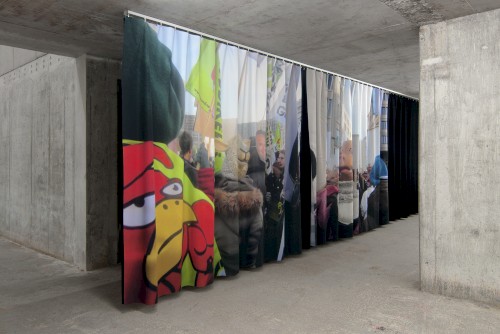
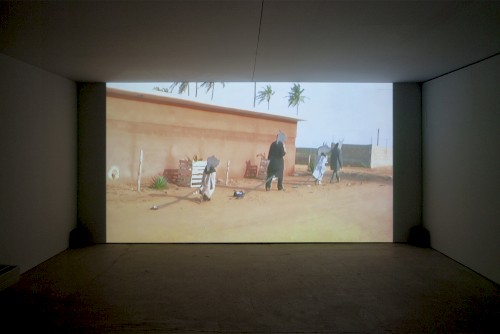
The scenes are real, as are the political and economic processes, and the perceived impotence of art to counter such systemic violence in any way may be no less real.
Die Schauplätze sind real, die politischen und ökonomischen Prozesse sind es auch, und ebenso real mag die gefühlte Ohnmacht der Kunst sein, dieser systemischen Gewalt irgendwie zu begegnen.
In the Stomach of the Predators delves deeper – indeed, with its index-card apparatus, it insists on imparting facts and the context in which they belong. It challenges us to read more about the complexities of the critical discourse on capitalism. But don’t we already know all these things? At least in their broad outlines? Is Creischer preaching to the converted when she rubs her audience’s noses in the dust of neoliberal emissions? None of this is going to come as a surprise to anyone who brings a sufficiently critical mind to the study of this sort of archive. But emancipation is work, the critical faculty cannot be delegated, and Creischer’s skeptical view of political statements issued by artists is distinctly palpable. She’s aware that there’s something deeply grotesque about art – you’ll expose yourself to ridicule if you seriously tilt at the windmills of predatory capitalism – and defines her position accordingly. She takes the gravity of the situation seriously, and then again, she doesn’t. She’s rightfully indignant about the greed of the wolves and hyenas, and adamant about the data that document their practices. And she rightly stages this indignation as a theater piece.
Two photographs taken during a demonstration on December 19, 2013, against the Grüne Woche, a food-industry trade fair held annually in Berlin, form a curtain behind which a film is playing. The predators are back; a sloppily dressed wolf, hyena, bear, and jackal are trotting from Spitsbergen via Benin to Istanbul. From biennial to biennial, from one political scene to the next, they are a vagabond caravan of artists or artistes of social critique, their progeny in tow. In acts of gauche satire, they appropriate the roles of predators, distributing seeds, occupying land, and lining up like beads on a string the zeroes they’ve extracted from the debasement of the commons and now hand over to the fantastic mathematics of speculation, which will turn them into ones to be added up as profit. It’s a procession of beggarly mythical creatures, dragging their hungry stomachs – ladies’ handbags containing precious objects –as prisoners drag their chains, unwaveringly waiting to knife their companions in the back at the right moment, because that’s what they are. Predators.
The scenes are real, as are the political and economic processes, and the perceived impotence of art to counter such systemic violence in any way may be no less real. If art does try (and what else is it going to do?) it’s a good idea to conceive the whole thing as a farce from the outset; and since art works often find themselves in the predators’ stomachs, they might as well be a bit indigestible. Alice Creischer has been a leading figure in the movement toward a more political art in Germany since the 1990s, and the way her exhibition uses beauty to speak of grievous ills and simultaneously hedges its bets may remind some viewers of the subversive poetics with which artists living under repressive regimes, as in the former East Germany, gummed up the censors’ dragnets. An artist who studies today’s predators as they gobble up the commons and isn’t ready to part with the common good of cultural self-determination does well not to include with her work the mining rights that might let others extract all its value.
Text: Alexander Koch / Translation: Gerrit Jackson / Editing: Kimberly Bradley / Photos: Alexander Koch
IN THE STOMACH OF THE PREDATORS vertieft das Thema, ja insistiert mit einem Karteikastenapparat auf der Vermittlung von Fakten und auf deren Einordnung, fordert, sich einzulesen in die komplexe Materie kritischer Kapitalismusrezeption. Aber wissen wir das alles nicht schon? Zumindest ungefähr? Trägt Creischer Eulen nach Athen, wenn sie dem Kunstpublikum den Feinstaub neoliberaler Emissionen unter die Nase reibt? Der wird niemanden überraschen, sofern er oder sie bereits ausreichend kritischen Geist mitbringt, um ein Archiv wie dieses zu studieren. Aber Emanzipation ist Arbeit, Kritikfähigkeit nicht delegierbar, und Creischers Skepsis gegenüber politischen Künstlerstatements deutlich zu spüren. Sie weiß um die große Groteske der Kunst, in der sich lächerlich macht, wer ernsthaft mit Spatzen auf Raubtiere schießt, und sie bestimmt ihre Position entsprechend. Sie nimmt den Ernst der Lage ernst und auch nicht. Zurecht ist sie empört über die Gier der Wölfe und Hyänen und besteht auf den Daten, die deren Praxen belegen. Und zu Recht inszeniert sie diese Empörung als ein Stück Theater.
Zwei Fotos von einer Demonstration gegen die Grüne Woche am 19.12.2013 in Berlin bilden einen Vorhang, dahinter läuft ein Film. Hier kehren die Raubtiere wieder. Wolf, Hyäne, Bär und Schakal ziehen in schlurfigen Klamotten von Spitzbergen über Benin nach Istanbul. Von Biennale zu Biennale, von einem politischen Schauplatz zum nächsten, vagabundieren sie wie eine Karawane sozialkritischer Künstlerexistenzen, den Nachwuchs im Schlepptau. In unbeholfener Kabarettistik werden die Rollen der Prädatoren appropriiert, die ihr Saatgut verteilen, Land okkupieren und ihre Reihen von Nullen knüpfen, die sie aus der Entwertung von Commons bezogen haben und nun weiterreichen an die fantastische Mathematik der Spekulation, die sie in Einsen verwandelt und zu Profiten addiert. Es ist eine Prozession ärmlicher Fabelwesen, die ihre hungrigen Mägen – Damenhandtaschen mit preziösem Inhalt – hinter sich her ziehen wie Gefangene ihre Ketten, während sie nur darauf warten, im geeigneten Moment dem Vordermann das Messer in den Rücken zu stoßen. Raubtiere eben.
Die Schauplätze sind real, die politischen und ökonomischen Prozesse sind es auch, und ebenso real mag die gefühlte Ohnmacht der Kunst sein, dieser systemischen Gewalt irgendwie zu begegnen. Tut sie es doch, und was sonst sollte sie auch tun, ist es eine gute Option, das gleich als eine Farce aufzufassen und, zumal sie selbst oft im Magen der Raubtiere sitzt, sich dabei nicht ohne Weiteres verdaubar zu machen. Seit den frühen Neunzigerjahren ist Alice Creischer eine der wichtigen Figuren künstlerischer Politisierungsbewegungen in Deutschland, und wenn ihre Ausstellung mit den Mitteln des Schönen das Schlimme erzählt und zugleich verklausuliert, mag das nicht ohne Grund an die subversive Poetik erinnern, mit der Künstlerinnen und Künstler unter repressiven Regimen, z.B. in der DDR, die Maschen der Zensur verklebten. Wer heute Raubtiere dabei studiert, wie sie Commons fressen, und das Gemeingut kultureller Selbstbestimmung noch nicht hergeben will, tut gut daran, seinem Werk nicht gleich alle Schürfrechte beizulegen, mit denen sich vielleicht alles aus ihm herausholen ließe.
Text und Fotos: Alexander Koch
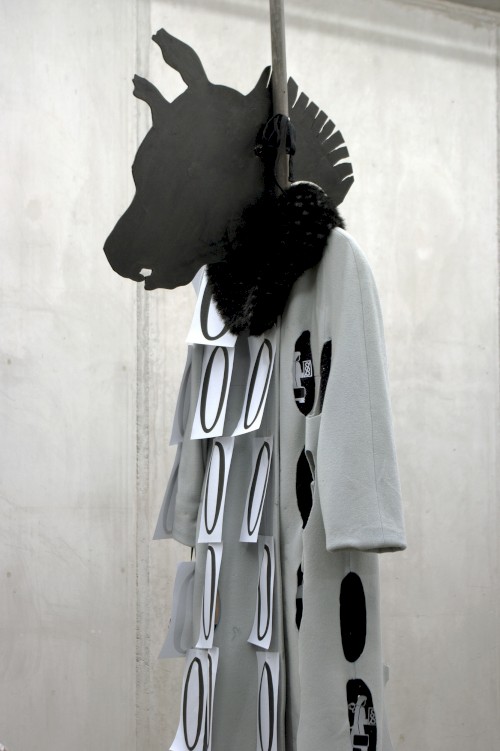
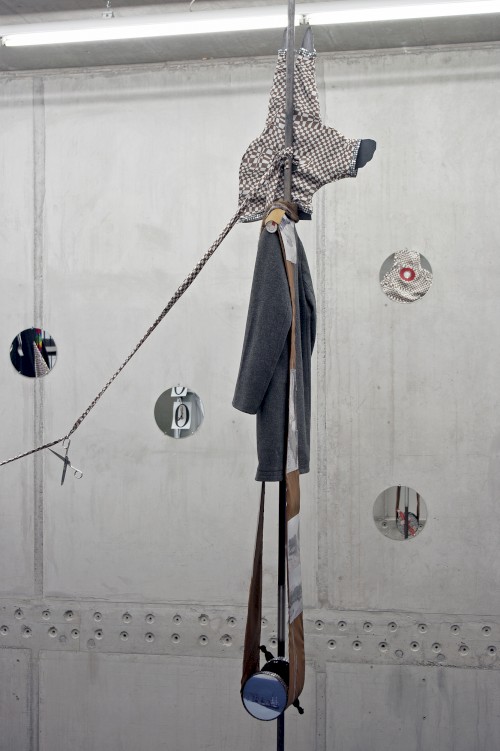
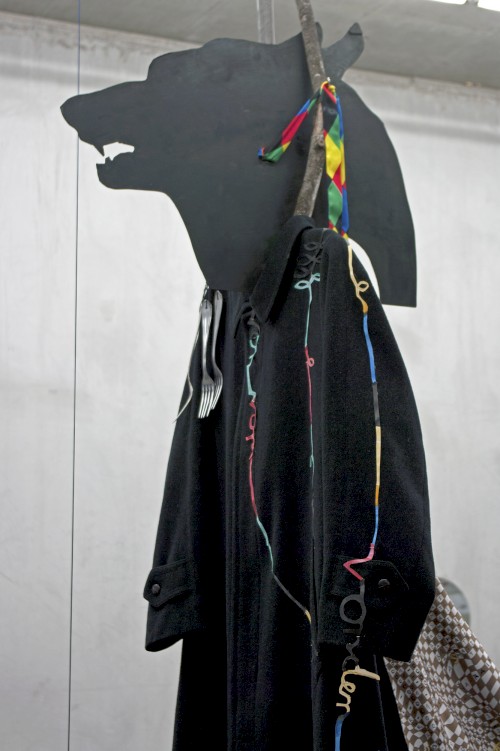
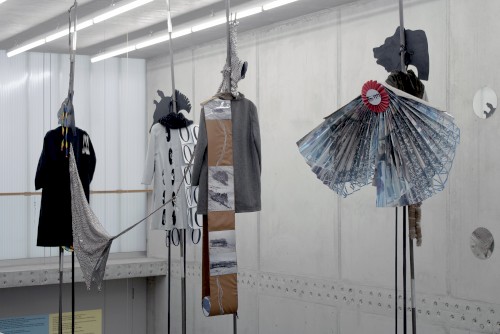
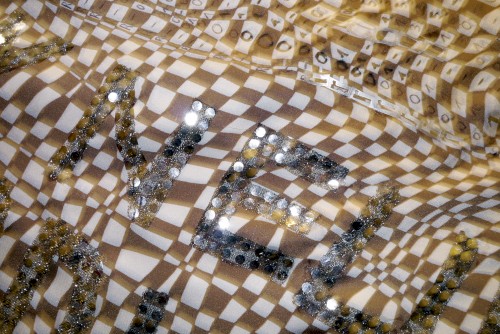
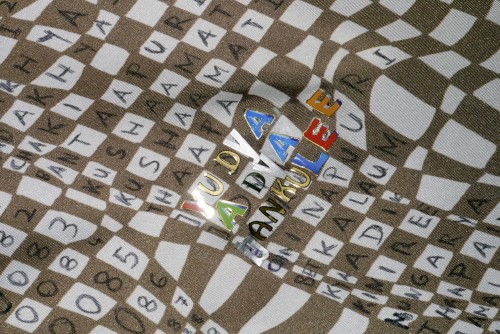

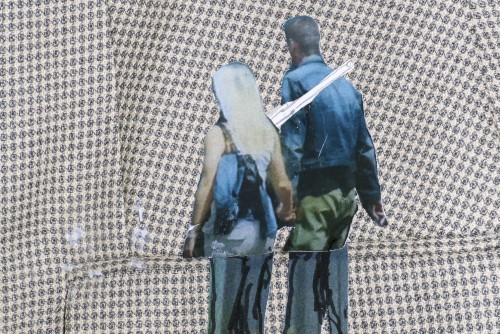
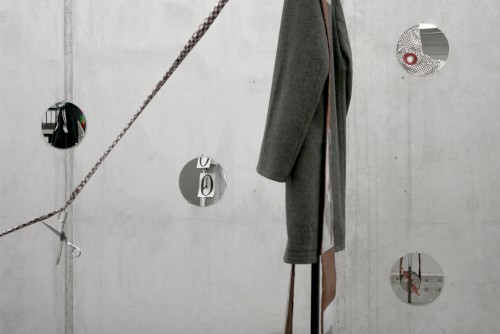
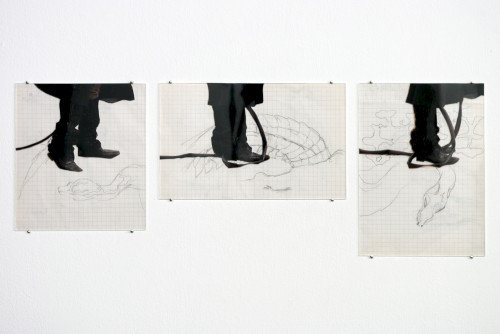
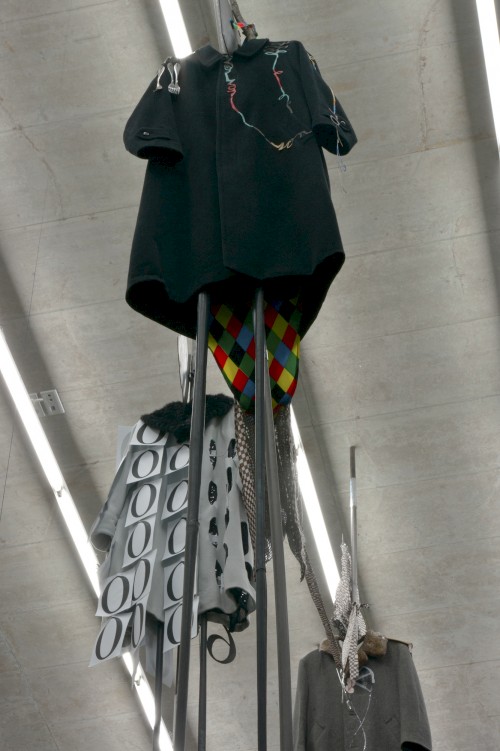
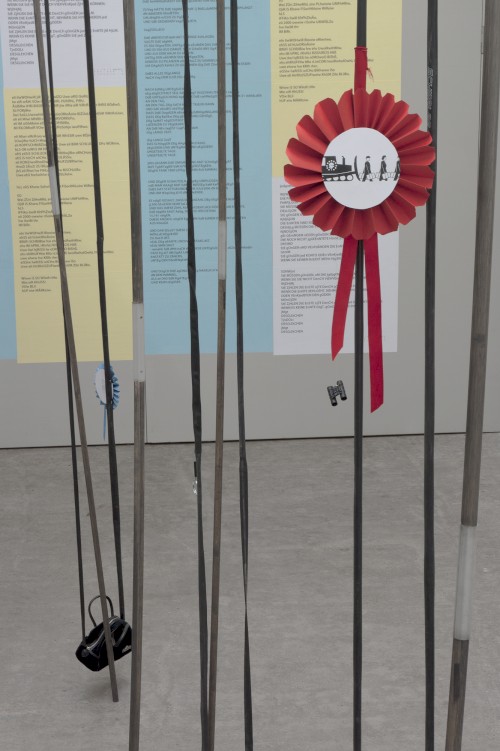
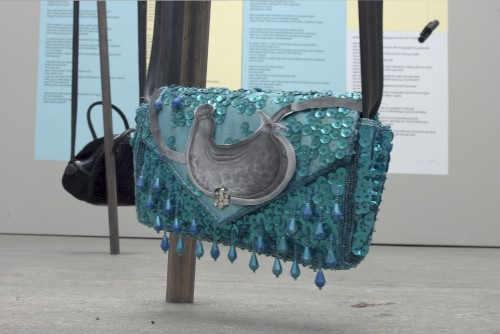
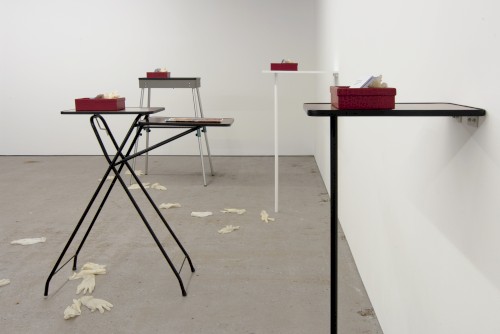
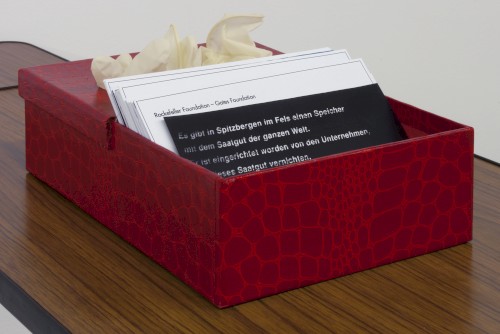
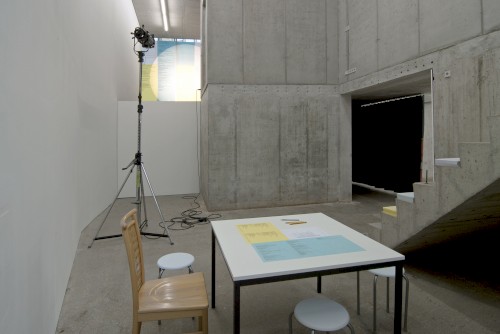
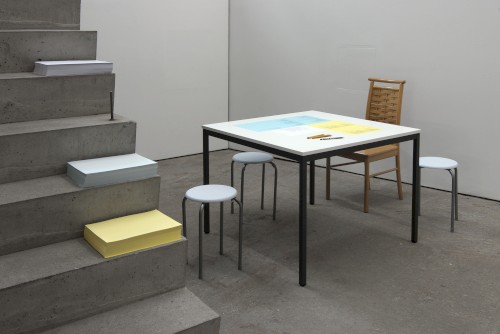
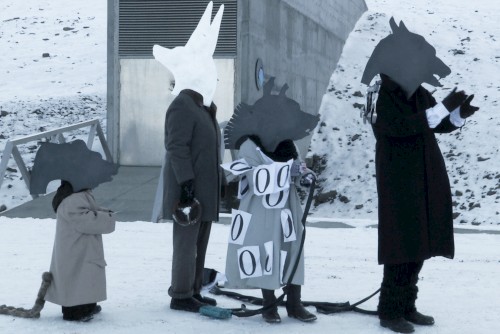
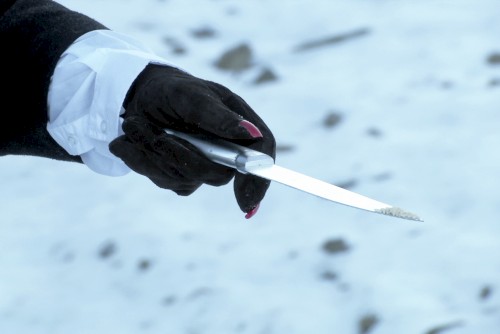
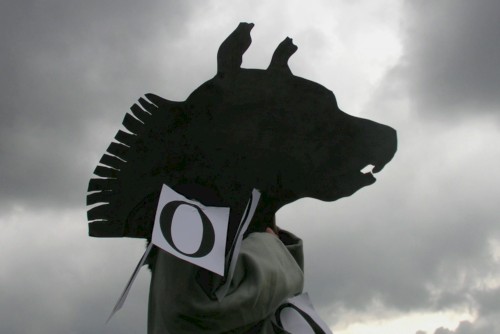
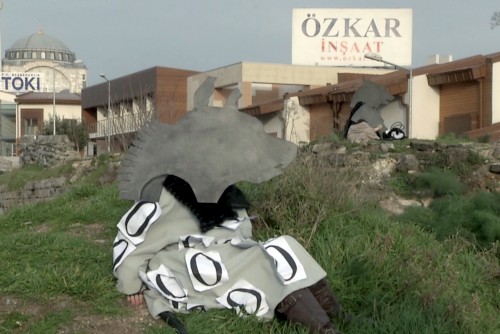
- Current
- Upcoming
- 2026
- 2025
- 2024
- 2023
- 2022
- 2021
- 2020
- 2019
- 2018
- 2017
- 2016
- 2015
- 2014
- 2013
- 2012
- 2011
- 2010
- 2009